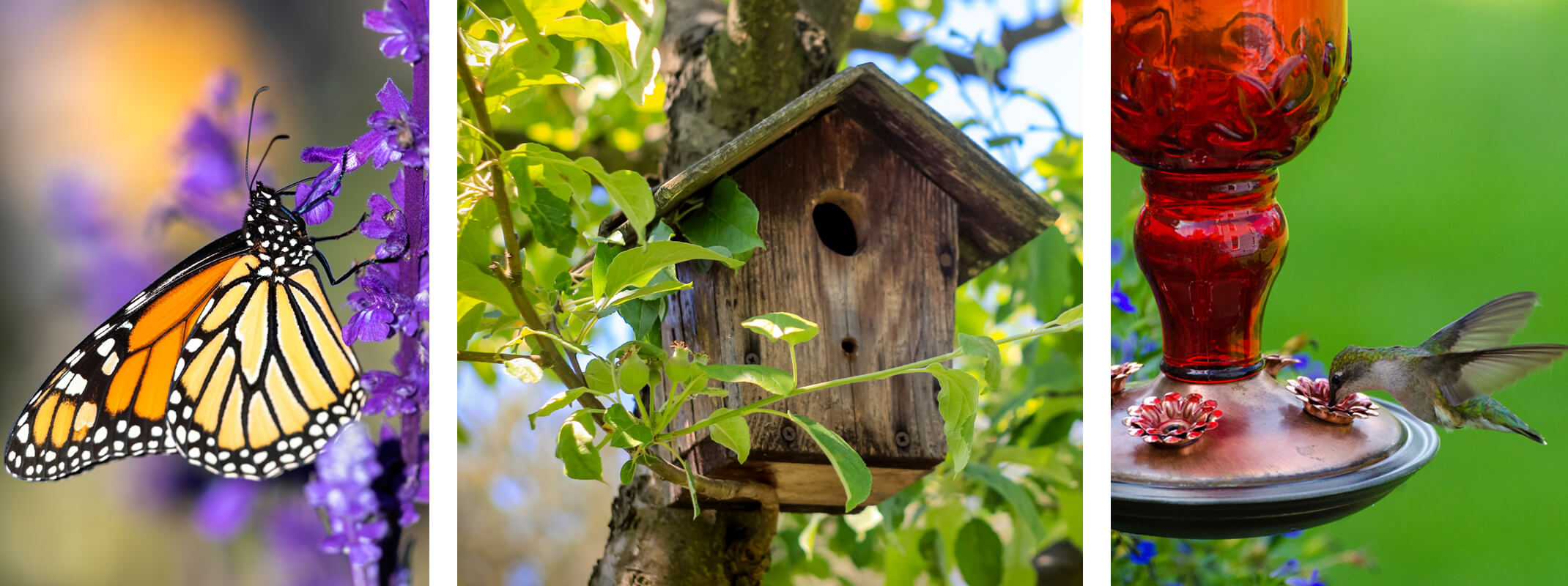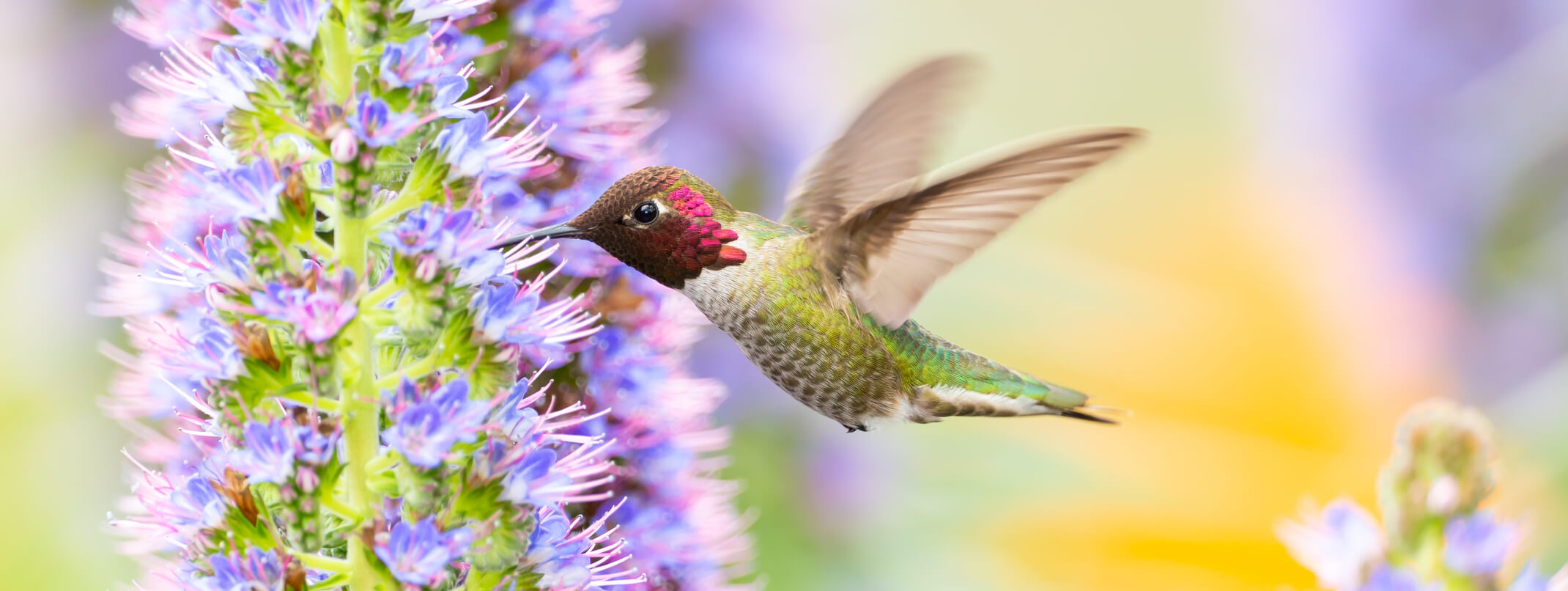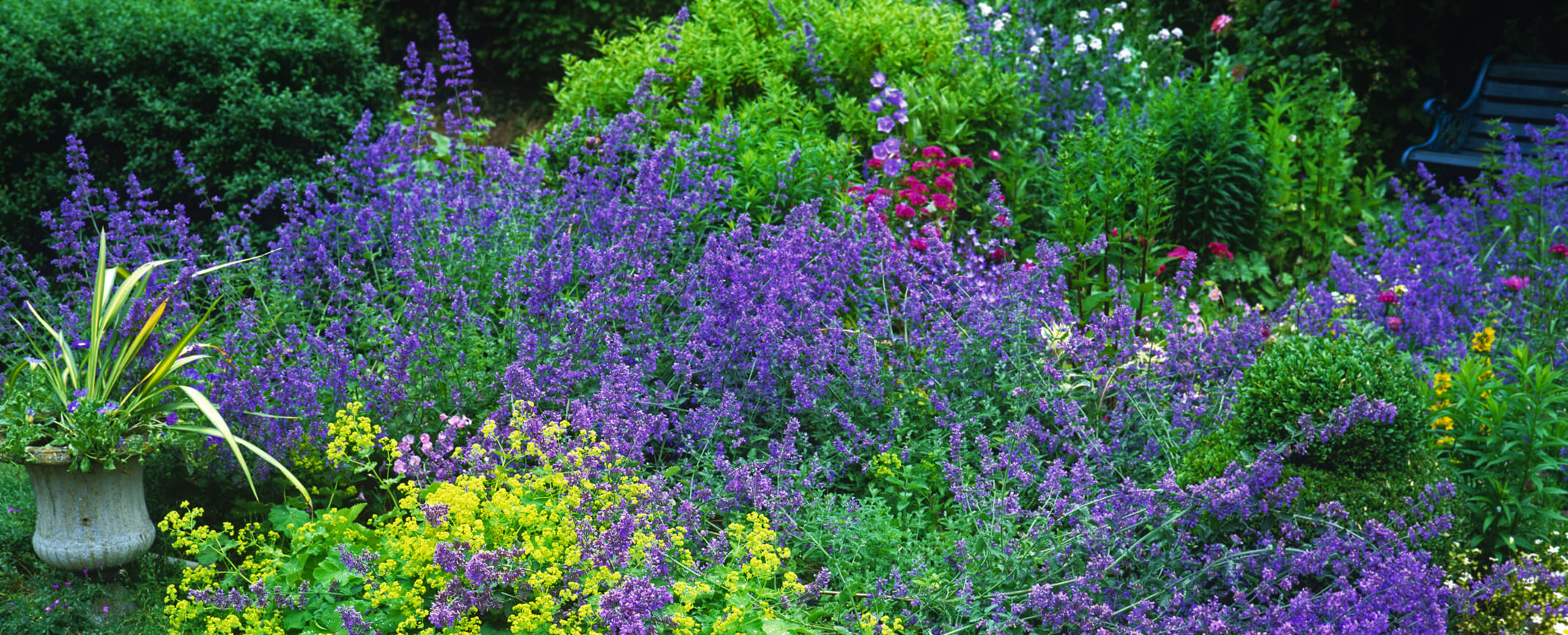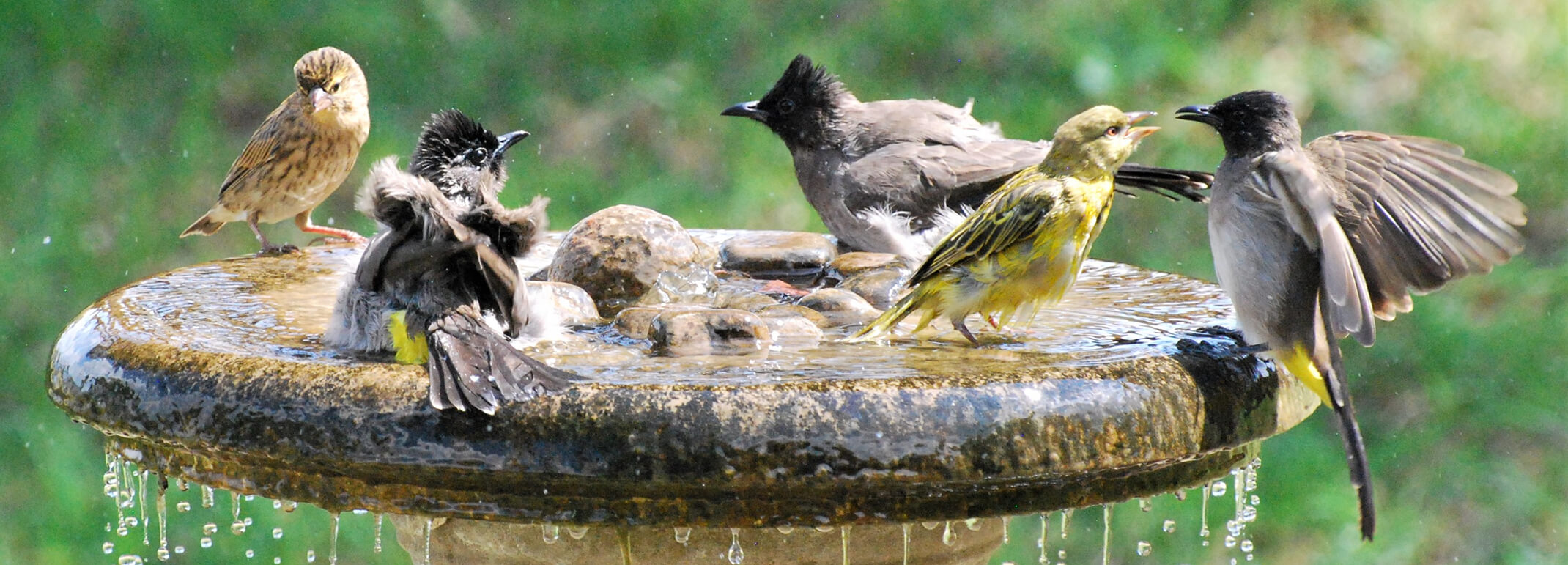 Back to the Be Inspired Blog
Back to the Be Inspired Blog

How-To: Wildlife-Friendly Gardening
Sometimes it can be hard to fathom how one person or homeowner can truly impact the environment. As gardeners, we naturally tend to have a deep love and care for nature and, in turn, wildlife!
California supports an immense array of wildlife and plant species and acts as a major highway for millions of migratory birds. Even if you are an urban gardener, your yard can become a haven for local and migratory wildlife. Creating a wildlife-friendly garden is actually quite attainable. Ready to get started?
Let’s go! Make Your Garden a Home for Wildlife
Building a wildlife-friendly garden involves a few different layers. They provide lots of habitat for wildlife, including everything from pollinators to birds and other critters. Wildlife-friendly gardens naturally conserve water, don’t have a ton of grass, and don’t use pesticides.

When In Doubt, Plant Native
Any plant that grows naturally in a particular region, habitat, or ecosystem (i.e., was not brought here by humans) is considered native. They have formed symbiotic relationships with the wildlife in any particular area over many years, thus providing a more sustainable habit than non-native species. Native plants attract birds and butterflies, reduce water consumption, reduce pest problems, offset the loss of natural wildlife habitats, and, as an added perk, require far less maintenance than non-native species.
There are literally hundreds of wildlife-friendly native flowers, trees, and shrubs to choose from here in California! Hummingbird sage, blue-eyed grass, bush anemone, California bush sunflower, lupines, salvia, ‘Canyon Snow’ iris, and wild rose are all very popular wildflowers. The National Wildlife Federation has an excellent online resource where you type in your zip code, and they will give you pages and pages of gorgeous native plants. Of course, we highly recommend popping into our garden center to check out our wide selection of native varieties and bring some home for your garden!
Wildlife-Friendly Garden Design
Designing a wildlife-friendly garden may take a little effort to set up, but once your plants have a couple of years to settle in, your garden will require far less maintenance than working with plants from outside of the region. Since these plants evolved to thrive in California conditions, they tend to need less watering, are less inclined to pest problems, and help maintain healthy soil.
It is best to group plants with similar needs (i.e., irrigation requirements), and when it comes to planting native, you can look to nature to see what works best together. If you see different varieties growing in the wild together, they will grow well together in your wildlife-friendly garden!
 Less Lawn, More Plants
Less Lawn, More Plants
Many of us love to use our lawns to play with the kids and pets or hang out with friends. We’re not saying that you need to completely get rid of your lawn; however, if you are serious about making your yard and garden wildlife-friendly, your lawn will not contribute to the cause.
Rather than trying to get rid of it completely, chip away at it slowly from the edges! Add things like native groundcovers, such as yarrow, Redwood sorrel, California sweet grass, and Seaside Daisy, or caterpillar host plants like Douglas iris in place of your turf.
 Add a Water Feature
Add a Water Feature
Consider adding a modest water feature if you don’t already have one. Creating a wildlife-friendly garden is not all about the plants, after all! A small water feature like a miniature pond, fountain, or birdbath will attract birds, dragonflies, frogs, and salamanders to your yard. We recommend small features for drought-conscious gardening.
Avoid Hefty Fall Garden Clean-Up
While it can be tempting to tidy every last bit of dead foliage away from your garden come fall, it is actually best to wait until spring to do a serious garden clean-up! Brush piles, spent plant material and fallen leaves provide important cover and food for wildlife during the winter months, even here in California. A wildlife-friendly garden mimics nature, and no one is doing fall clean-up out in wild forests, are they?
To learn more about wildlife-friendly gardening or pick up some beautiful native plants this spring, stop by your local SummerWinds Nursery!

